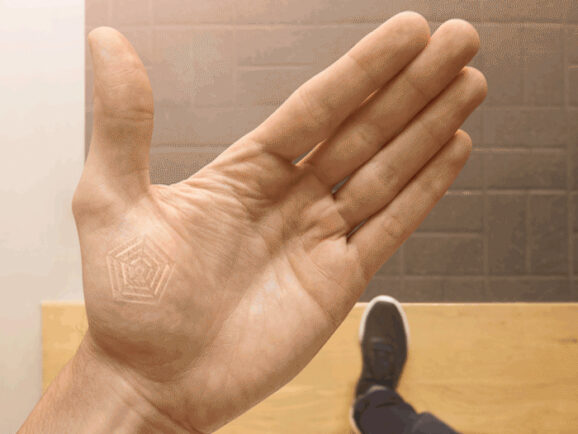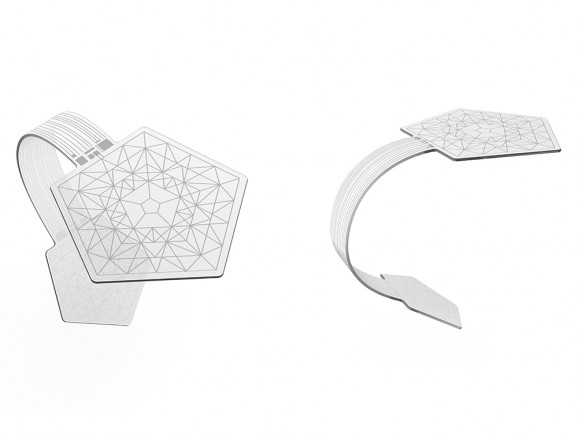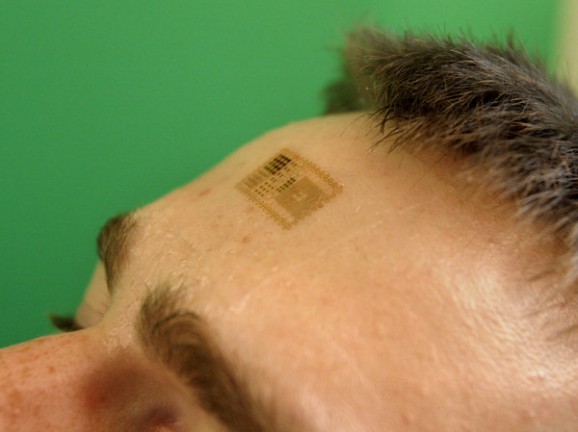Are Tattoos The Next Big Wearable Technology?
This article is more than 2 years old
 Wearable technology is all the rage these days, whether it’s to diagnose epilepsy, travel to space, or create music. To that end, tattoos are becoming an unexpected entry into this arena, but they do more than play music—technology can also be implanted under the skin, or stuck onto the skin like stickers.
Wearable technology is all the rage these days, whether it’s to diagnose epilepsy, travel to space, or create music. To that end, tattoos are becoming an unexpected entry into this arena, but they do more than play music—technology can also be implanted under the skin, or stuck onto the skin like stickers.
New Deal Design, the company responsible for FitBit, has come up with a project called UnderSkin, a small, tattoo-like device that gets implanted under the skin on your hand. Your body charges the device, which is equipped with sensors and monitors all kinds of data. New Deal designer Jaeha Yoo says the device could “become a paper trail for yourself,” as it stores information about the user’s movements, habits, and relationships. The tattoo can do everything from unlocking smart locks, to communicating health information via wireless near-field communication.
 One of the best parts about the implant is that it doesn’t require an app to use. So where does the data go? Well, to a second tattoo on your palm that glows or flashes in various configurations in response to the information gathered. Anything that breaks our reliance on screens is a step in the right direction, if you ask me, but this user interface might seem off-putting to those accustomed to the app system.
One of the best parts about the implant is that it doesn’t require an app to use. So where does the data go? Well, to a second tattoo on your palm that glows or flashes in various configurations in response to the information gathered. Anything that breaks our reliance on screens is a step in the right direction, if you ask me, but this user interface might seem off-putting to those accustomed to the app system.
The device also requires implantation. It’s certainly not a complicated procedure, but it’s a procedure nonetheless, which means people have to go somewhere to have it done. That’s pretty tricky—I don’t think either hospitals or tattoo parlors will appeal to potential users for various and obvious reasons. There’s also the hurdle that accompanies any data gathering and monitoring system—who owns it? And who can hack it?
Admittedly, there are some obstacles, but suffice it to say that wearable technology is poised to make some leaps in the coming years when it comes to how exactly users wear it. Of course, we’ve seen this kind of thing in science fiction before, and it often gives rise to scenes in which characters try to dig out these kinds of identifying chips. But hey, we’ll see where it goes.

Regardless of whether we’re ready to line up for one of these devices, the trend is clear: wearable technology is moving from external to internal, or, at least, to something that fits in or on the body in a much more seamless way than a watch or conventional heart-rate monitor. I think it’s inevitable that at some point, anything that can be implanted will be, including television, email, texts, and ads. This seems to be a move in that direction. And, of course, Google’s had designs on this idea for a while now, which may understandably be a significant hurdle for some users.












